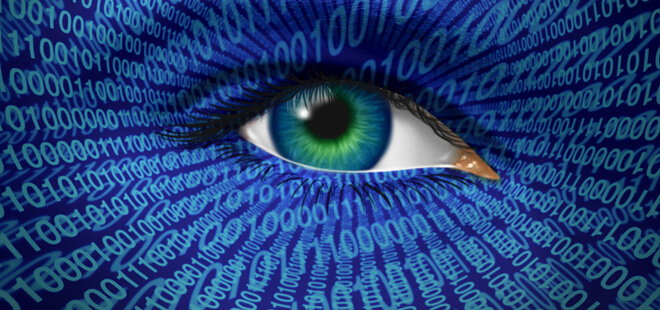iTech Review: Learn Augmented Reality, NFC and QR Codes Before 2015!
If you feel like 2013 flew by, then you would be right as it seems our existence is tied closely, symbiotically, actually, with our personal technological devices. Our computers, cameras, phones and music players long ago became one device, and still that device gets smarter. It talks to us, it shows us how to travel, keeps our appointments and has generally become our mother. The web has also changed and will evolve quickly this year. If you haven’t familiarized yourself with augmented reality, NFC or QR codes, then you may not survive to see 2015.
The best way of judging all three of these web-based tools (is it even worth mentioning the short-lived SnapTags?) is to look at the capabilities of each, and how they are used in marketing, and communications today.
Augmented Reality
According to Wikipedia:
Augmented reality (AR) is a live, direct, or indirect view of a physical, real-world environment whose elements are augmented by computer-generated sensory input such as sound, video, graphics, or GPS data. It is related to a more general concept called mediated reality, in which a view of reality is modified (possibly even diminished rather than augmented) by a computer. As a result, the technology functions by enhancing one’s current perception of reality. By contrast, virtual reality replaces the real world with a simulated one.
Research explores the application of computer-generated imagery in live-video streams as a way to enhance the perception of the real world. AR technology includes head-mounted displays, and virtual retinal displays for visualization purposes, and construction of controlled environments containing sensors, and actuators.
Google Glasses one of the first forays into consumer available uses of AR technology, and it’s a beautiful use of the technology. With the headset at the ready, AR codes and image recognition capabilities will surely give QR codes a run for their money and may… MAY, be the replacement technology. Unfortunately for GG owners, marketing society will take a long time to supply the input for users. Creating the material is still complicated and expensive.
Perhaps in three to five years, once a majority of consumers own the headsets, and mobile technology is seamlessly integrated, and the headsets are proven not to cause migraines, and cancerous tumors in users, marketers will abandon QR codes. However, expect QR codes to evolve at the same pace as AR based devices. Time will tell, and all the speculation in the world can’t possibly second guess the uses that will be available, while making those who are involved with the technology, the new batch of millionaires… or billionaires.
Check out this collection of AR examples and capabilities.
RELATED: IT Budget: Strengthen Your Security With No Additional Investment
NFC
Near field Communications (NFC) was patented in 1983, but standards were set in 2004. You may have used NFC technology since then without even realizing it. Do you commute, and use a PayPass in your car to pay tolls without having to stop, and make a payment each time you travel over a bridge, or through a tunnel? Do you touch a monthly commuter pass card to a token box, or turnstile when boarding a train, or bus? Do you pay for your morning coffee by touching your credit card to a target on a cash register, and then just leave? Do you “bump” your smartphone against someone else’s to exchange contact information? When you walk into work, do you have a badge you wave in front of a sensor to gain entry? If you do, you are using NFC technology.
Near field communication (NFC) is a set of standards for smartphones, and similar devices to establish radio communication with each other by touching them together, or bringing them into close proximity, usually no more than a few centimeters apart. Communication is also possible between an NFC device, and an unpowered NFC chip, called a “tag.”
There are three modes of operation for NFC.
- The read/write mode allows an NFC device to read a tag like the kind you’d find in a poster.
- The peer-to-peer mode makes it possible for two NFC-enabled devices to exchange information. This lets you do things like tap your phone to another person’s phone to exchange contact information and other files.
- Finally, there’s the card emulation mode. This is what lets NFC emulate, or imitate a smart card like the kind you use in public transportation, or ticketing systems.
NFC devices can be used in contactless payment systems, similar to those currently used in credit cards and electronic ticket smartcards, and allow mobile payment to replace, or supplement these systems. For example, Google Wallet allows consumers to store credit card, and store loyalty card information in a virtual wallet, and then use an NFC-enabled device at terminals that also accept MasterCard PayPass transactions. Germany, Austria, Latvia, and Italy have trial tested NFC ticketing systems for public transport. China is using it all over the country in public bus transport, and India is implementing NFC based transactions in box offices for ticketing purposes.
Looking to create a more interactive experience, the Museum of London teamed up with Nokia to create NFC-enabled apps. Visitors with NFC-enabled devices can learn more about various objects on display, buy tickets for future exhibitions, get vouchers for the museum’s shop, and cafés, and Like or follow the museum on various social media platforms.
RELATED: Utilizing Video Marketing to Optimize Search Engine Results
(Read Forget mobile payments. The future is the mobile wallet)
With NFC “tags,” perhaps implanted in our thumbs, we could, in theory, become a cashless, and keyless society (At CES 2012, Yale Lock demonstrated another use for NFC. The company had built special electronic locks that use NFC to lock or unlock doors. Holding your phone up to a pad on the door sends a signal from the phone to the lock. The lock disengages, and you can get inside), despite the conspiracy theories that would come up.
(Read Mobile Payments May Replace Cash, Credit Cards by 2020)
General uses of NFC include:
- Matching encrypted security code, and transporting access key.
- Due to short transmission range, NFC-based transactions are possibly secure.
- Instant payments, and coupon delivery using a smartphone handset, as done with your credit card, or debit card.
- Marketing, and exchange of information such as schedules, maps, business cards, and coupon delivery using NFC marketing tags.
- Pay for items just by waving your phone over the NFC capable devices.
- Transferring images, posters for displaying, sharing to social media, and printing.
- Effortless social media outreach, e.g., “Like” on Facebook, “follow” on Twitter via NFC smart stickers in retail stores, and printed material containing NFC chips.
Companies certainly see other uses, and the opportunities of furthering the empowerment of one’s personal smartphone. Like the cards you currently use to check into work (or open that locked front door) NFC works with receivers, and transponders that can communicate, but only if the two parts are within a few centimeters of each other. However, placing that communication within a phone has some other, added benefits. The phone is a communication device, so it can receive clearance updates on the fly, always up to date.
For instance, if you’re locked out of Building B because you do not have access, an email to the security administrator could push an update to your phone, which would then update the NFC chip’s clearance information. In a matter of moments, you go from locked out, to checking in.
Naturally, not everyone is jumping on the NFC wagon. Apple is still a major hold out on including NFC capabilities with their phones. According to TechRadar, in Jamie Carter’s article, “What is NFC and why is it in your phone?” it seems everyone else is getting ramped up. Samsung’s Galaxy 4 phone is NFC ready, as well as other manufacturer’s models.
A surprisingly huge number, largely because NFC have long been supported by the makers of Android handsets. Though Apple is yet to embrace NFC, flagship, and mid-range handsets from the likes of samsung, HTC, Motorola, Nokia, LG, and Blackberry all include NFC.
RELATED: Converting Visitors Into Customers
The latter all feature BlackBerry Tag, a peer-to-peer feature in the BlackBerry 7.1 OS that allows users to share contact information, documents, URLs, photos, and other multimedia content by tapping their BlackBerry smartphones together.
NFC is still in its trial phase, but it’s got a big future. ABI Research predicts that 1.95 billion NFC-enabled devices will ship in 2017, largely in smartphones, though NFC will also enter the living room. WiFi routers will swap passwords for a simple “tap” from any smartphone, tablet or games console, with 395 million consumer electronics devices to ship in 2017 – in other words, NFC will be in everything.
Naturally, the fear of NFC has always been the very thing that makes it convenient – the radio frequency can be stolen by readers passed close to your phone or wallet, filled with NFC credit cards. The stickers used to register NFC use can easily be used by unscrupulous people who might stick it to doorways of busy buildings, and stores, collecting people’s information, especially from apps that store bank account, and credit card information.
The technology, although not new, still has some distance before it is ready for wide usage, and like the QR code, and AR technology, everything evolves daily, so by ship dates of 2017, who knows if a new technology will surpass NFC? There are certainly issues that need to be worked out.
QR Codes
Say what you will about AR and NFC, but they are still years away from QR code usage. QR codes are affordable, easy to use, and provide all the planned uses the other technologies promise, but have not as yet fulfilled. QR can and will also be incorporated into each new technology.
QR codes generations, at least through uQR.me, are recyclable, and can be reprogrammed as information changes. There are no large reprogramming costs.
- Creating QR codes are free and businesses of any size can use them effectively.
- All mobile devices can use QR codes NOW!
- The technology has been perfected, and will continue to evolve with safe, guaranteed results from available scanners.
- QR codes, as with AR and NFC is a linking tool, and it is the content to which they link that makes for success or failure.
So, Anticipate great things down the road, but don’t lose sight of what you need today… and tomorrow… and probably the next day as well. Happy 2014!
Featured image ©GL Stock Images




